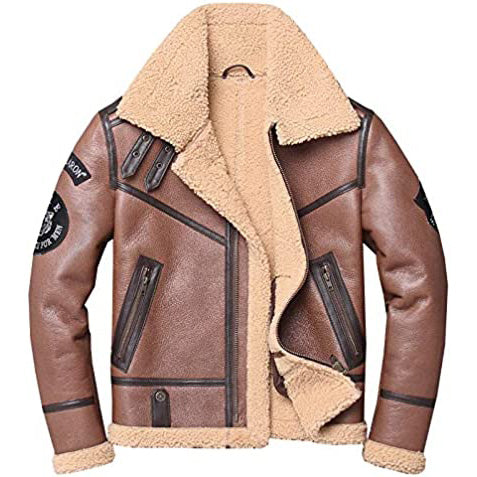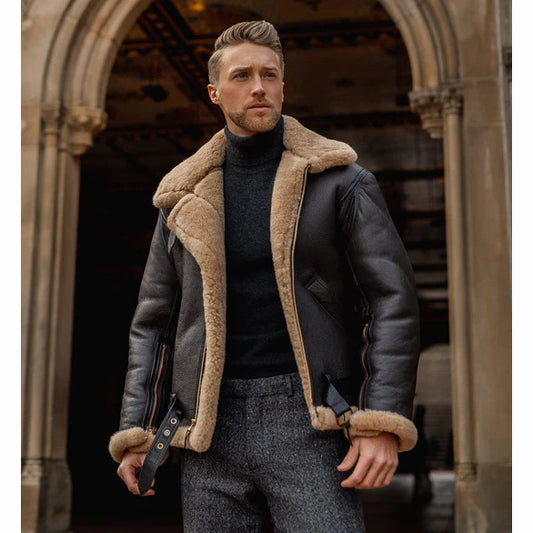Introduction to Bonded Leather
Bonded leather is a term that frequently pops up in the world of fashion, furniture, and even car upholstery. But what exactly is bonded leather, and how does it differ from genuine leather? As more consumers become aware of ethical and cost-effective alternatives, bonded leather has gained popularity. In this blog, we will dive deep into understanding bonded leather—its composition, benefits, and how it compares to other types of leather.
By the end of this guide, you’ll have a comprehensive understanding of whether bonded leather is a suitable choice for your next leather product purchase, especially if you're considering Jackets Kingdom as your trusted brand for jackets and coats.
What is Bonded Leather?
Bonded leather is a synthetic material made from the leftover scraps of genuine leather mixed with polyurethane or latex. It’s bonded together on a fiber backing, giving it the appearance of leather at a much lower cost. Manufacturers take these leather fibers and combine them with adhesives to create a material that looks like leather but is far more affordable.
This process allows for a wide range of finishes, textures, and colors, making bonded leather a versatile choice for many applications, from fashion accessories to furniture upholstery. However, despite its leather-like appearance, it’s important to understand that bonded leather is not as durable or high-quality as full-grain or top-grain leather.
How is Bonded Leather Made?
Here’s a simplified breakdown of how bonded leather is manufactured:
- Collection of Leather Scraps: Leather offcuts from other production processes are gathered.
- Shredding: These leather scraps are shredded into small fibers.
- Mixing: The fibers are mixed with adhesives and a synthetic material like polyurethane.
- Pressing: The mixture is pressed onto a fiber backing (often paper or fabric).
- Finishing: A polyurethane or vinyl surface layer is applied to give it the desired texture, color, and sheen.
Bonded Leather vs Genuine Leather: What’s the Difference?
When choosing between bonded leather and genuine leather, understanding the key differences is essential.
| Aspect | Bonded Leather | Genuine Leather |
|---|---|---|
| Material Composition | Mixture of leather scraps and synthetic materials | 100% natural leather |
| Durability | Less durable, prone to cracking over time | Extremely durable, can last decades |
| Cost | Affordable | Expensive |
| Appearance | Looks like leather but lacks natural texture | Unique texture, patina improves with time |
| Environmental Impact | More eco-friendly (uses leather waste) | Varies, depending on tanning process |
| Maintenance | Easy to clean but not as long-lasting | Requires regular maintenance but ages well |
Key Takeaways:
- Bonded leather is a cost-effective, eco-friendly option but lacks the durability of genuine leather.
- Genuine leather provides unmatched durability, comfort, and authenticity, though at a higher price point.
Pros and Cons of Bonded Leather
To help you make an informed choice, let’s dive into the advantages and disadvantages of bonded leather.
Pros:
- Affordable: Bonded leather is much more affordable than genuine leather, making it accessible for those on a budget.
- Versatile: Available in a wide variety of textures and finishes, bonded leather can closely mimic the look of genuine leather.
- Eco-Friendly: Since bonded leather uses recycled leather scraps, it is considered a more sustainable option compared to full-grain leather.
- Easy Maintenance: Bonded leather is easy to clean with a damp cloth due to its synthetic finish.
Cons:
- Less Durable: Bonded leather is prone to peeling and cracking over time, especially in high-use items like furniture or bags.
- Doesn’t Age Well: Unlike genuine leather, which develops a patina and becomes softer with age, bonded leather can degrade over time.
- Lower Quality: The synthetic materials and adhesives used in bonded leather can detract from its overall quality and feel.
- Heat Sensitivity: Bonded leather may become damaged when exposed to high temperatures, leading to warping or discoloration.
When Should You Choose Bonded Leather?
Bonded leather is an ideal option for those who want the look of leather without the high price tag. It works well for low-impact items such as decorative pillows, certain accessories, or upholstery in rooms with less foot traffic. However, if you’re looking for durability and a long-lasting product, genuine leather or even faux leather may be better choices.
Consider bonded leather if:
- You’re on a budget but love the look of leather.
- You need leather-like material for decorative or low-use items.
- You prioritize sustainability by choosing products made from recycled materials.
Bonded Leather in Fashion: Jackets and Accessories
At Jackets Kingdom, we understand that customers want affordable yet stylish outerwear. While our primary focus is on genuine leather jackets, bonded leather can serve as a fashionable and cost-effective alternative for certain items. For those looking for trendy, leather-like designs without the hefty price tag, bonded leather jackets are a viable option.
Features of Bonded Leather Jackets:
- Affordability: Get the look of leather without breaking the bank.
- Customizable Finishes: Available in various colors and textures to match your style.
- Eco-Conscious: By using bonded leather, you’re supporting sustainable practices in the leather industry.
FAQs About Bonded Leather
1. Is bonded leather as good as genuine leather?
No, bonded leather is not as durable or high-quality as genuine leather. It may look similar, but it is prone to peeling, cracking, and doesn’t age as well.
2. How long does bonded leather last?
On average, bonded leather can last 2 to 3 years with regular use, but this depends on the quality and maintenance of the product.
3. Can bonded leather be repaired?
Once bonded leather begins to crack or peel, it is challenging to repair, unlike genuine leather which can be conditioned and restored over time.
4. Is bonded leather eco-friendly?
Yes, bonded leather is considered more eco-friendly than genuine leather because it uses recycled leather scraps, reducing waste in the production process.
5. How do you clean bonded leather?
Bonded leather can be cleaned with a soft, damp cloth. Avoid harsh chemicals or abrasive materials as they can damage the surface.
Expert Opinion on Bonded Leather
From a durability perspective, bonded leather is not the best option for items that require long-term use. However, as a cost-effective alternative, it serves its purpose well for consumers who prioritize budget and aesthetics over longevity. Personal Experience: Having used bonded leather furniture and accessories, I’ve found that while it maintains its appearance for the first couple of years, it begins to show signs of wear more quickly than genuine leather. However, for items like belts or decorative pillows, it’s a great, low-cost option.
Conclusion
Bonded leather is a great alternative for those looking for an affordable, eco-conscious material that mimics the look of genuine leather. While it lacks the durability and authentic texture of real leather, it’s perfect for budget-friendly fashion or home decor. If you’re looking to invest in long-lasting, high-quality leather, genuine leather is your best bet. However, for more affordable options, Jackets Kingdom offers a variety of leather and bonded leather items that cater to all styles and budgets.




